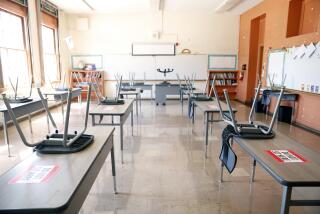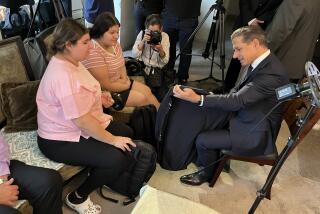School-Based Health Centers
* I was extremely pleased to read the informative, balanced, and timely article, âA Medical Lifeline for Teensâ (March 15). However, I am concerned that a portion of a statement that I made will be misunderstood by your readers, especially school nurses. The quote, that school-based health centers are not like the âtypical nursesâ offices with Band-Aids and hot water bottles,â was part of a discussion of the publicâs misperception of the important role of school nurses and school-based health centers. We discussed the limited services available to students through the nurseâs office when I was in school.
However, this limited role for nurses hasnât been true for many years. The current reality is that school nurses play a significant and essential role in maintaining the health of students. School nurses provide hearing and vision screening, monitor immunization status, screen for infectious diseases and are responsible for the diagnosis and referral of students with complex medical and psychosocial problems. School nurses are underpaid, overworked and underappreciated.
As the medical director for both the San Fernando High School and Culver City school-based clinics, I work closely with school nurses. Many of the referrals to the school-based clinics are the result of the excellent diagnostic skills of these school nurses. They are on the front lines, and on a daily basis are confronted with students with myriad problems including injuries and acute illnesses, family problems, child abuse, depression, pregnancy, learning difficulties and chronic problems such as diabetes, asthma and epilepsy.
MARTIN ANDERSON MD, MPH
Director Adolescent Medicine
UCLA Department of Pediatrics
* In your editorial, âA Lot More Than Just Sexâ (March 19), you insinuate that Cardinal Roger Mahony, the Archdiocese of Los Angeles and a âphalanx of outraged parentsâ reacted hysterically to the introduction of school-based clinics on three high school campuses in the Los Angeles Unified School District.
You suggest that the clinicsâ critics should be mollified now that The Times has ascertained that only âslightly more than one-tenth of 1% of the student bodiesâ at the three high schools seek out condoms. What about other forms of contraception?
Even if the contraceptive services are as insignificant as your numbers indicate, the principle underlying our objections remains: A public school is an inappropriate place for distributing contraceptives and high school students are inappropriate recipients. We have no quarrel with providing basic health services to needy students through the schools; we do not consider birth control and abortion basic health services.
REV. GREGORY COIRO, OFMCap.
Director, Office of Public Affairs
Archdiocese of Los Angeles
More to Read
Sign up for Essential California
The most important California stories and recommendations in your inbox every morning.
You may occasionally receive promotional content from the Los Angeles Times.










